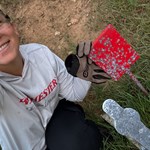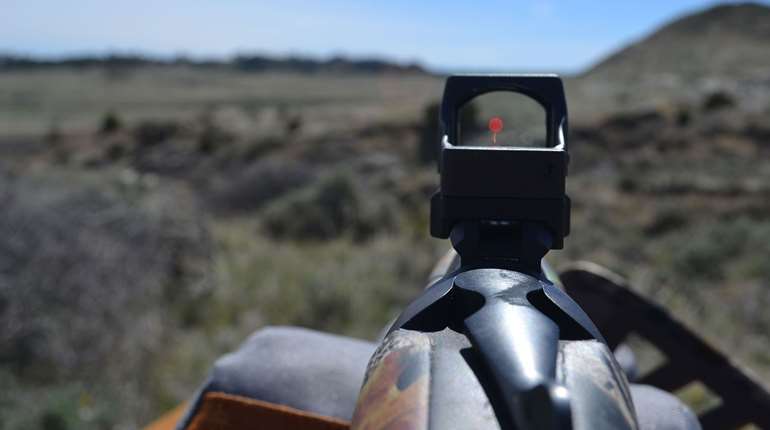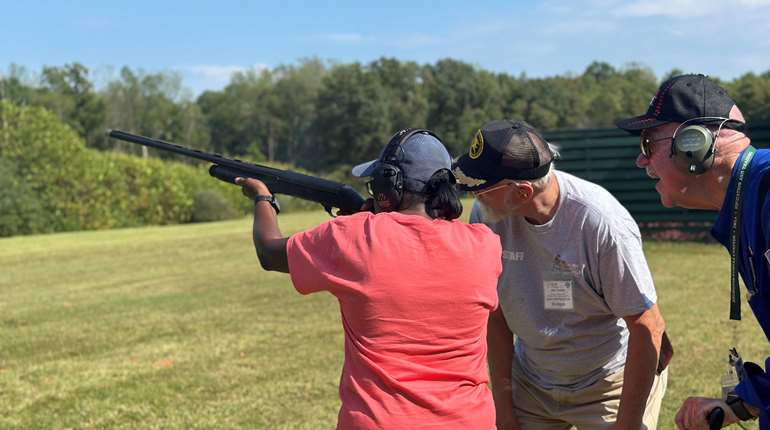
If you’re like me, you haven’t looked at your deer rifle since the end of last hunting season. Maybe you killed a deer with it, then you wiped it down, stuck it in the safe and haven’t thought about it since. Now that the season’s about to open again, this is the time to get it out of the safe and give it a good once-over to make sure it’s ready to go on opening day.
First, double-check that the gun is unloaded.
Carefully inspect the whole thing for signs of rust. Even if it was properly wiped down before you put it in the safe, things happen, and if rust is developing, it’s best caught early.
Assuming you cleaned the barrel and action at the end of the season, you don’t need to do so again unless you were a little too heavy with the oiled rag and left too much oil on the gun. An oily film can collect dirt and firing residue, which gums up the whole works over time. Whether you think this is a problem or not, I recommend wiping the metal parts down with a very lightly oiled rag each time you handle it, particularly if the barrel is blued.
If you didn’t give the whole gun a thorough cleaning after the hunting season ended, now’s the time. I recommend removing the stock to clean out any grime or rust that’s starting to form. I also clean my barrel, bolt and receiver, but I do not take apart the trigger or the bolt—it’s just beyond my capabilities. Eventually I’ll take my gun to a gunsmith to have those cleaned (every few years should be sufficient for the conditions I hunt in) or buckle up and learn to do it myself.
Clean the inside of your barrel to remove any fouling if you didn’t do this after last season. When you’re done, give everything a very light layer of lubrication. Check any screws on the gun to make sure they’re tight—just don’t overtighten (check the torque specs if you need to).
This is a good time to clean the glass on your scope with lens wipes or other cleaners. Check the screws that secure your scope, again, being careful not to overtighten. Make sure your accessories are in working order: bipod, sling (tighten the sling swivel studs if applicable), scope covers, etc.

Now it’s time to hit the range, but while you’re in the closet grabbing some ammo, this is a good time to take a quick ammo inventory. Do you need to pick up another box or two to be ready for the season? Are you switching from one ammo to another this year? If so, be prepared for extra sight-in time.
No matter how well your rifle shot last season, it’s a good idea to confirm your zero at the range before you hunt with the gun again. I can’t explain it, but weird things happen to guns when they sit idle, and your gun might not be as perfectly zeroed as it was when you shot it last.
Most guns don’t shoot their best on a squeaky-clean barrel, so plan to shoot a handful of what we call “fouling shots” just to get a sort of base level of fouling in your bore. If you are particular about exactly how many fouling shots your gun likes and how many shots you want to go in between cleanings, knock yourself out, and you probably don’t need me to teach you anything.
At the range, it’s OK to start directly at 100 yards, because unless you’ve moved or changed your scope or you’re using different ammo, you’ll probably be pretty close to where the gun was last zeroed. I like to shoot two three-shot groups when re-zeroing. This confirms my zero while also laying down those fouling shots. Make any adjustments as needed. If you’re having trouble hitting the paper at 100 yards, take it back to 25 yards until you’re on target. This isn’t likely unless you’ve made a major change, but stranger things have happened.
Once your zero is confirmed, now’s the time to run a new ballistics chart on an app if you have changed ammo and/or if you plan to shoot at longer ranges. This is also a great time to do a little practice shooting from field positions, like prone, off sticks or kneeling.
When you’re all done, wipe the metal parts down with a rag (fingerprints can cause rust quickly on blued metal in particular) and the gun is ready for deer season.
One final note: While the season is ongoing, be careful where you store the gun. I have made the foolish mistake of leaving a gun in a fabric gun case sitting on my bedroom floor for up to a week after a hunt before I got around to taking it out and wiping it down. It was already picking up surface rust. It’s my own laziness at fault, but still, I like to keep my deer rifle and my waterfowl shotgun in a gun cabinet or safe during the season, uncased, rather than leaving them in cloth carrying cases from weekend to weekend.














































